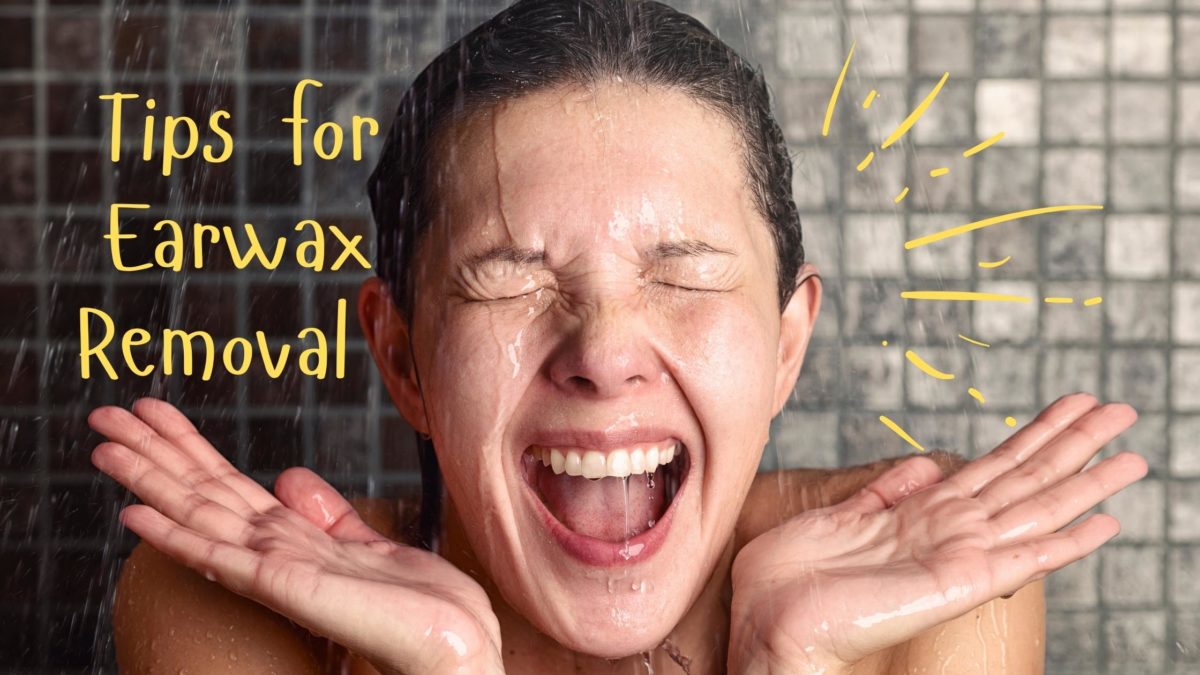We are all familiar with the sticky substance that is earwax! But did you know that experts do not recommend using a cotton swab for its removal? Knowing about how to remove earwax may seem obvious but it is often done incorrectly, not enough, or too much. Excess earwax that remains in the ears can produce unpleasant symptoms so knowing how to remove it effectively is helpful for maintaining ear health!
What is Earwax?
Also known as cerumen, earwax is a substance that the body naturally produces to serve different purposes. Earwax helps keep the ears lubricated which prevents dryness and itchiness. Additionally, it is part of the ear’s internal and natural cleaning mechanism. But what exactly is earwax?
Earwax is a mixture of fatty secretions produced by the ear’s sweat glands which travel through the ear canal; collecting dead skin cells, hair, and other substances. This mixture actually contains antibacterial properties that absorb dirt, preventing potentially harmful substances from entering the middle and inner ear (causing an infection). Earwax naturally exits the ear with the help of jaw movement (produced by talking, eating, laughing, etc.) which propels the earwax through the ear canal and out of the ear opening. Sometimes, however, earwax can accumulate which then requires us to remove it.
Impact of Excessive Buildup
Earwax can accumulate in the ears and cause symptoms including:
- The ear(s) feel full
- Pain, aches
- Hearing a ringing sound
- Difficulty hearing
- Presence of an odor and/or discharge from the impacted ear
- Dizziness, cough
If excessive earwax remains in the ears, it can lead to:
- Temporary hearing loss: the accumulation of earwax in the ear canal means that sound is blocked from traveling through the ear. This makes it difficult to hear and process incoming sound information.
- Ear infections: earwax consists of bacteria and if that remains in the ear for quite some time, it can lead to an ear infection.
These symptoms indicate that earwax needs to be removed and there are useful ways to do that!
Tips for Effective Earwax Removal
One of the most common misconceptions about removing earwax is that using a cotton swab is effective. But not only is this not helpful, it could be hazardous because it can easily push earwax further into the ear. Moving earwax deeper into the ear can damage the eardrum, cause infection, contribute to temporary hearing loss, infection etc. Best ways to safely remove ear wax includes
- Soften Earwax
This commonly recommended way of removing earwax involves using substances – simple saline solution, over-the-counter ear drops, etc. – to soften ear wax which then makes it much easier to remove. This works by inserting drops of the solution into the ear and allowing it to drain.
- Ear Irrigation Methods
There are different ways to practice this method but ear irrigation essentially consists of using water or other solutions to drain the ears. You tilt your head one way and place drops of the solution into the ear followed by tilting your head the other way to release the fluid and wax.
- Visiting a Doctor
If these methods are not effective for you and you find yourself still experiencing symptoms of excessive earwax, you should visit a doctor. Doctors are able to effectively remove earwax with specific instruments designed for the ears (cerumen spoon, forceps, suction devices, etc.).
Explore these practices to see what is most effective for you!
Additional Tips
In addition to safely removing earwax, there are tips you can be aware of and practice for ear care including:
- Do not use small items to clean or scratch your ears (bobby pins, sticks, etc.)
- Avoid using ear candles to drain earwax. Ear candles are inserted into the ear and lit on the other side to suction earwax. This method not only is dangerous but it also doesn’t work!
- For hearing aid wearers: you may experience more earwax accumulation because of your hearing device (and sweat) so be sure to consistently and thoroughly clean your hearing aids.
- After swimming, take the time to thoroughly dry out your ears to prevent infection.
If you are struggling with hearing loss related to earwax impaction, contact us today to schedule a consultation!

